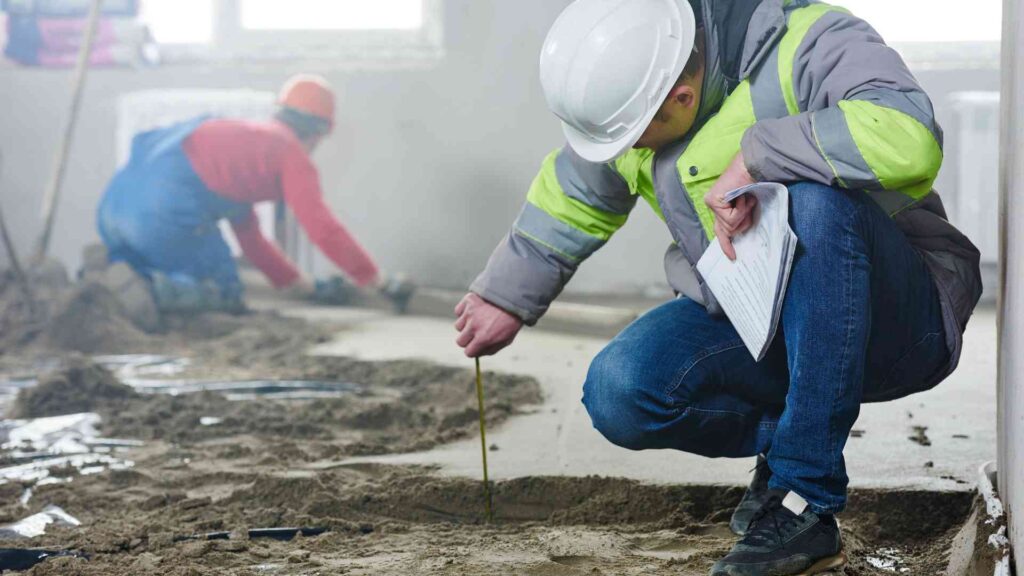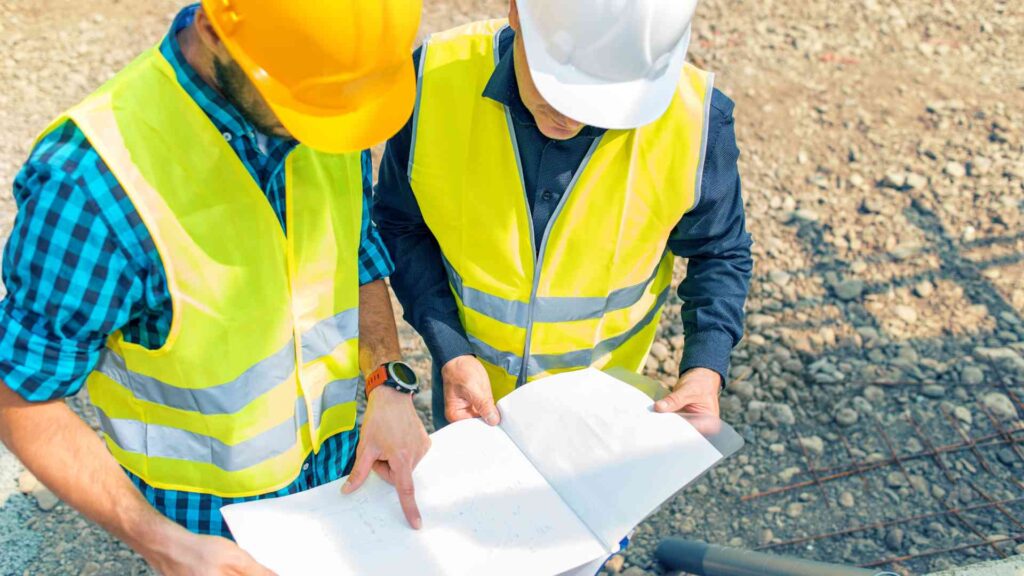Concrete is one of the most widely used construction materials in the world. Its durability, versatility, and affordability make it a popular choice for various construction projects. However, like any other material, concrete is not immune to problems. In this article, we will discuss five common concrete problems and provide valuable insights on how to avoid them.
Understanding Concrete and Its Importance
Before delving into the common concrete problems, it is crucial to understand the role of concrete in construction. Concrete serves as the foundation and structural element of buildings, bridges, roads, and many other structures. Its ability to withstand compressive forces makes it an indispensable material in the construction industry.
Concrete is a composite material composed of cement, water, and aggregates such as sand, gravel, or crushed stone. When these ingredients are mixed together, they form a paste that hardens over time, creating a solid and durable material.
The Role of Concrete in Construction
In construction, concrete acts as the backbone of structures, providing strength and stability. It is used to form the foundation, walls, floors, and columns of buildings. Additionally, concrete is used for paving roads and creating durable infrastructure. Without concrete, modern construction as we know it would be nearly impossible.
Concrete’s versatility allows it to be molded into various shapes and sizes, making it suitable for a wide range of construction projects. It can be poured into formwork to create intricate designs or used in precast elements for faster and more efficient construction.
Moreover, concrete’s ability to resist fire and extreme weather conditions makes it a preferred choice for building structures that need to withstand harsh environments. Its thermal resistance helps regulate temperature fluctuations, providing a comfortable and energy-efficient living or working environment.
Key Properties of Concrete
Understanding the properties of concrete is essential to identify and prevent potential problems. Concrete possesses several important characteristics, including high compressive strength, durability, versatility, and thermal resistance. These properties make it a reliable and long-lasting material for various construction applications.
Concrete’s high compressive strength allows it to bear heavy loads without deforming or collapsing. This property is crucial for supporting the weight of buildings and infrastructure. Additionally, concrete’s durability ensures that structures can withstand years of use and exposure to environmental factors such as moisture, chemicals, and temperature changes.
Furthermore, concrete’s versatility allows it to be customized to meet specific project requirements. It can be mixed with additives to enhance its properties, such as increasing its resistance to cracking or improving its workability. This adaptability makes concrete suitable for a wide range of construction applications.
Lastly, concrete’s thermal resistance helps regulate the temperature inside buildings. It acts as a thermal mass, absorbing and releasing heat slowly, which reduces the need for excessive heating or cooling. This energy-saving characteristic not only benefits the environment but also reduces energy costs for building owners.
Identifying Common Concrete Problems
While concrete is known for its strength and durability, it can still develop problems over time due to various factors. Let’s explore some of the most common concrete problems encountered in construction projects.
Cracking in Concrete
Cracking is a prevalent issue in concrete structures. It can result from shrinkage during the curing process, thermal expansion and contraction, or external factors such as heavy loads or settlement of the foundation. Cracks not only affect the aesthetics but also compromise the structural integrity of the concrete.
When it comes to cracking, there are different types to consider. One common type is shrinkage cracking, which occurs when the concrete dries and contracts. This can happen if the concrete mix has too much water or if it dries too quickly. Another type is settlement cracking, which happens when the ground underneath the concrete shifts or settles unevenly. This can occur if the soil was not properly compacted before the concrete was poured.
In addition to these types of cracking, there are also temperature-related cracks. Concrete expands when it is exposed to high temperatures and contracts when it cools down. This constant expansion and contraction can lead to cracks forming over time. It’s important to consider these factors when designing and constructing concrete structures to minimize the risk of cracking.
Discoloration of Concrete
Discoloration, such as darkening or blotchy spots, can occur on concrete surfaces due to various reasons. These include improper curing, use of contaminated materials, or exposure to certain chemicals. Discolored concrete not only looks unattractive but may also indicate underlying problems.
Improper curing is a common cause of discoloration in concrete. Curing is the process of keeping the concrete moist and at the right temperature to allow it to properly harden and gain strength. If the curing process is not done correctly, it can result in uneven drying and discoloration. Contaminated materials, such as aggregates or water, can also cause discoloration. These contaminants can react with the cement in the concrete, leading to color changes. Lastly, exposure to certain chemicals, such as those found in fertilizers or cleaning agents, can cause discoloration over time.
To prevent discoloration, it is important to follow proper curing procedures, use high-quality materials, and avoid exposing the concrete to chemicals that can cause discoloration. Regular maintenance and cleaning can also help keep the concrete looking its best.
Scaling and Spalling Issues
Scaling and spalling refer to the flaking or peeling of the concrete surface. These problems typically occur due to freeze-thaw cycles, excessive moisture, or the presence of high amounts of water during the curing process. Scaling and spalling can compromise the concrete’s durability and expose it to further damage.
Freeze-thaw cycles can be particularly damaging to concrete. When water gets into the pores of the concrete and then freezes, it expands and can cause the surface to crack, flake, or peel off. This can happen if the concrete is not properly sealed or if it is exposed to repeated freeze-thaw cycles. Excessive moisture, such as from rain or improper drainage, can also lead to scaling and spalling. The presence of high amounts of water during the curing process can result in a weak surface layer that is prone to scaling and spalling.
To prevent scaling and spalling, it is important to ensure proper drainage around the concrete, especially in areas with freezing temperatures. Sealing the concrete can also help protect it from moisture and freeze-thaw damage. Additionally, using the right mix design and curing methods can help create a strong and durable concrete surface.
Curling of Concrete
Curling is the upward or downward bending of concrete slabs at the edges due to differential moisture content or temperature changes. It can lead to uneven surfaces, tripping hazards, and premature deterioration of the concrete.
Moisture content and temperature changes can cause the concrete to expand or contract unevenly, resulting in curling. This can happen if the concrete is not properly cured or if it is exposed to moisture or temperature fluctuations during the early stages of curing. Curling can also occur if there is a difference in moisture content or temperature between the top and bottom surfaces of the concrete slab.
To minimize curling, it is important to follow proper curing procedures and ensure that the concrete is not exposed to excessive moisture or temperature changes during the early stages of curing. Proper joint spacing and reinforcement can also help control curling and prevent the formation of uneven surfaces.
Concrete Delamination
Delamination refers to the separation of the top layer of concrete from the underlying substrate. It often occurs due to poor workmanship, inadequate bonding, or the presence of moisture. Delamination not only compromises the structural integrity of the concrete but also affects its appearance.
Poor workmanship, such as improper mixing or placing of the concrete, can result in inadequate bonding between the layers of concrete. This can lead to delamination over time. Moisture can also play a role in delamination. If the concrete is exposed to excessive moisture, it can weaken the bond between the layers and cause delamination.
To prevent delamination, it is important to ensure proper workmanship during the construction process. This includes using the right mix design, properly placing and finishing the concrete, and ensuring adequate curing. Proper drainage and waterproofing can also help prevent moisture-related delamination.
Prevention Measures for Concrete Problems
While concrete problems can be daunting, they can be avoided through proper construction practices and adequate maintenance. Let’s explore some prevention measures that can help mitigate these issues.
Proper Mixing Techniques
Ensuring that concrete is properly mixed is crucial for its longevity and strength. Follow the recommended mixing ratios, use quality materials, and pay attention to the curing process. Properly mixed concrete reduces the chances of cracking, scaling, and other problems.
Adequate Curing Process
Proper curing is essential to prevent concrete problems. Adequate moisture retention and temperature control during the curing period promote hydration and strength development. Avoid premature drying or exposure to extreme weather conditions that can lead to cracking, discoloration, and other issues.
Importance of Sealing
Sealing concrete surfaces offers protection against moisture penetration, chemical spills, and staining. Regularly sealing concrete helps maintain its appearance, extend its lifespan, and prevent scaling, spalling, and discoloration.
Correct Placement of Joints
Strategic placement of joints in concrete structures helps accommodate shrinkage, temperature changes, and other movements. Properly located joints prevent cracking, curling, and delamination by allowing controlled movement and reducing stress on the concrete.
Maintenance Tips for Long-lasting Concrete
Even with preventive measures, regular maintenance is essential to ensure the longevity of concrete structures. Here are some practical maintenance tips:
Regular Inspection and Cleaning
Perform periodic inspections of concrete surfaces to identify any signs of damage or wear. Clean concrete surfaces regularly to remove dirt, debris, and potential contaminants that can cause discoloration or other problems.
Timely Repairs and Replacements
Address any concrete problems promptly to prevent further damage. Carry out necessary repairs or replacements of damaged sections to maintain the structural integrity of the concrete and avoid costly repairs in the future.
Use of Quality Materials
Avoid compromising the quality of materials used in concrete construction. Choose reputable suppliers and ensure that all materials meet the required standards. Using quality materials from the start reduces the chances of concrete problems later on.
By understanding common concrete problems and implementing preventive measures, you can avoid costly repairs, enhance the longevity of concrete structures, and ensure their safety and visual appeal. Remember that proper construction practices, regular maintenance, and attention to detail are key to avoiding these concrete problems.


